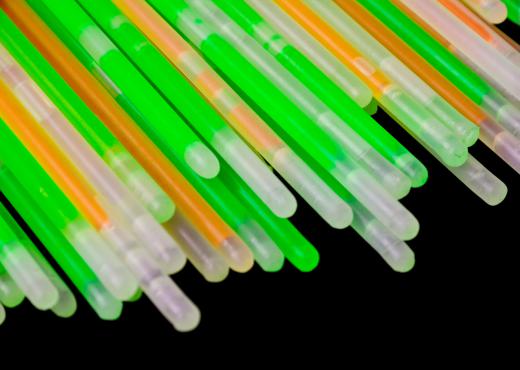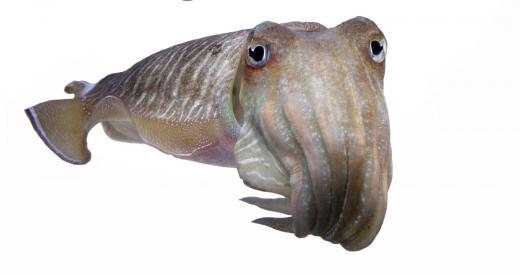What is Chemiluminescence?
 Mary McMahon
Mary McMahon
Chemiluminescence is the emission of light and heat as the result of a chemical reaction. It is a form of electromagnetic radiation which just happens to fall in the visible spectrum, making it easy to see and identify. The best-known example of chemiluminescence is probably the chemical reaction used to make glow sticks light up, which is the result of cracking a small vial of one chemical into a chemical it will react with.
When chemiluminescence occurs in animals, it is known as bioluminescence. Several animal species use this process as a signal, or to lure prey; fireflies are notable producers of chemiluminescent reactions, as are some algae. When subjecting chemicals to an electrical current creates a luminescent reaction, it is termed electrochemiluminescence.

There are all sorts of interesting applications for chemiluminescence. For example, Luminol, a chemical widely used in the forensics community, reacts with iron to generate a luminescent reaction. When forensics teams want to determine whether or not traces of blood are at a crime scene, they can spray the site with Luminol to generate a reaction. It can also be used to check for traces of other reactants at a site, assuming that a chemical which generates a chemiluminescent reaction can be obtained. Some gas phase reactions also exhibit this property, so chemiluminescence can be used to check for traces of certain impurities in the air.

The light from such reactions is often a dull green or blue in color, and the brightness varies, depending on the chemicals involved and the amount of chemicals present. Sometimes, chemiluminescence can be extremely bright, and such reactions are often used to demonstrate this interesting property in the lab to students. At other times, it may be much more subtle, requiring a sharp eye to detect the traces of the reaction.

As the reaction progresses, the chemical composition changes, and the light will begin to die off before fading away entirely as a result of conversion. Often, chemiluminescence is very brief, at least to the naked eye, although scientific tools can be used to measure the reaction as it continues. The stages of the reaction can also be used to provide clues, with researchers analyzing how long the reaction takes place at different phases, and how the color and brightness levels change.
AS FEATURED ON:
AS FEATURED ON:














Discussion Comments
@KoiwiGal - I think you'll run into problems with people not wanting to eat something that has been so obviously genetically tampered with though. That's why the fish are so adamantly opposed in some places, but other genetically modified things (like tomatoes) slip under most people's radar.
I think it's likely, though that we will being using chemiluminescence light in more and more applications around the house. I would be surprised if it wasn't already possible to get wallpaper that lights up when you want it to, and I know you can definitely get luminous paint.
People think of it as a parlor trick, to be used only with glow sticks at concerts, but it has much wider applications.
What's interesting is that they are able to put this kind of luminescence into animals and plants now. There has been talk about making a glow in the dark Christmas tree for example. I think they take the gene from a squid although I'm not really sure which animal it is, and they insert it into other species.
As far as I know, they've done fish (which you can buy as pets in some places, although other places have banned them) and at least one rabbit. But, they could potentially use chemiluminescence for all kinds of things. If they could figure out a way to spread the gene around, for example, they could use it to tag diseases like Tuberculosis. At the moment, it takes a long time to test and isolate cattle who have contracted TB. If it was linked to a chemiluminescence mechanism, it would simply be a matter of running a black light over the herd.
chemiluminescence with luminol and hydrogen peroxide will last about two minutes.
is this an example of an endergonic or exergonic reaction?
what would happen if it got in your eye?
How long would the chemoluminescence last? would it be a matter of minutes, or would it be visible for hours?
Post your comments